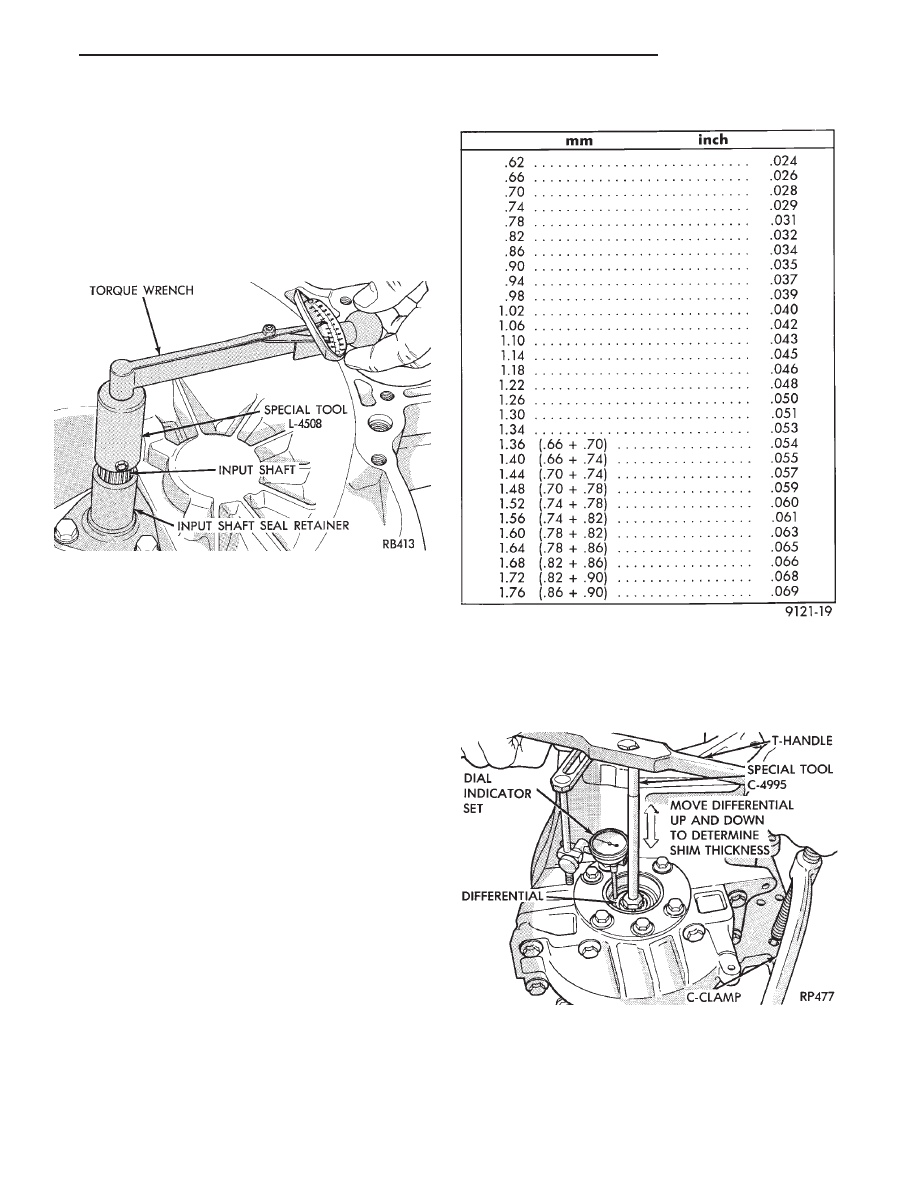Chrysler Le Baron, Dodge Dynasty, Plymouth Acclaim. Manual - part 107

(8) Verify that a preload condition does not exist.
Use Special Tool L-4508 and an inch-pound torque
wrench to check input shaft turning torque (Fig. 2).
The turning torque should be less than 5 in. lbs.
CAUTION: Step (1) MUST be repeated every time a
thinner shim is installed. This will assure that the
input shaft bearing cup is pressed the proper dis-
tance into the case. If the turning torque is too high,
install a .04mm (.0016 inch) thinner shim.
(9) Recheck input shaft turning torque. Repeat step
(8) until the proper bearing turning torque is obtained.
Observe CAUTION in step (8).
DIFFERENTIAL BEARING PRELOAD ADJUSTMENT
(1) Remove bearing cup and existing shim from
differential bearing retainer. (See Differential Bearing
Retainer in Subassembly Recondition section).
(2) Select a gauging shim which will give 0.025 to
0.254mm (.001 to .010 inch) end play. SUGGESTION:
Measure original shim from differential bearing
retainer and select a shim 0.381mm (.015 inch-
)thinner than original for the gauging shim. In-
stall gauging shim in differential bearing retainer and
press in bearing cup. Installation of oil baffle is not
necessary when checking differential assembly
end play.
(3) Oil differential bearings with SAE 5W-30 engine
oil and install differential assembly in transaxle case.
Check extension housing O-ring for damage (replace if
necessary). Add a 1/16 inch bead of MOPAR
t Gasket
Maker, Loctite 518, or equivalent to extension flange.
Install extension housing and differential bearing re-
tainer. Torque bolts (see Tightening Reference).
(4) Position transaxle with bell housing facing down
on workbench with C-clamps. Position dial indicator.
(5) Apply a medium load to differential with Tool
C-4995 and a T-Handle, in the downward direction.
Roll differential assembly back and forth a number of
times. This will settle the bearings. Zero dial indicator.
To obtain end play readings, apply a medium load in
the upward direction while rolling differential assem-
bly back and forth (Fig. 3). Record end play.
(6) The shim required for proper bearing preload is
total of gauging shim thickness, plus end play,
Fig. 2 Checking Input Shaft Bearing Turning Torque
INPUT SHAFT SHIM CHART
Fig. 3 Checking Differential Bearing End Play to De-
termine Shim Thickness
Ä
TRANSAXLE
21 - 33